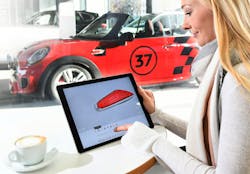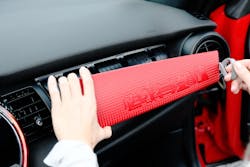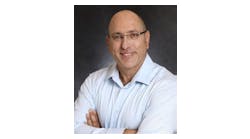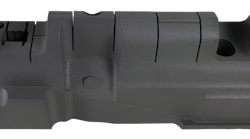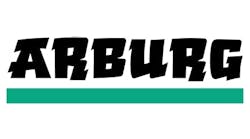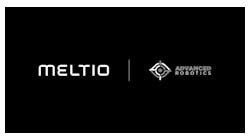“I think that trend is very present,” said Fabian Krauss, global business development manager for EOS of North America, a 3-D printer manufacturer. “Additive manufacturing has arrived in high-volume production and serial production.”
One high-volume application is a mascara brush for an international cosmetics company; the company makes about 12.5 million brushes per year, Krauss said.
“I would call that really mass manufacturing at a high volume,” Krauss said.
While additive manufacturing is often more expensive than injection molding for mass production, it can make sense when the part is complex or when its design can be improved by using 3-D printing, such as with the mascara brush.
“It is because it is a small piece — a very complex piece of brush,” Krauss said. “The [injection molding] tool is very expensive, so we’re competing against injection molding at that point,” Krauss said. “We’re competing against high tooling costs, which is good for us.”
The mascara brush, which is made on an EOS P 396 selective laser sintering printer by a contract manufacturer, features tiny channels through which the mascara flows onto a user’s eyelashes. That design would be difficult to accomplish via any other manufacturing method.
In addition, the brush is very small, so it doesn’t require much resin, which also makes additive manufacturing an attractive option.
Printing small parts is attractive from a materials perspective, since the main cost driver in additive manufacturing is the material, Krauss said.
While additive manufacturing increasingly is competing with injection molding for some jobs, Krauss describes it as complementing injection molding for lower-volume production, for customization and for making parts with complex geometries.
Automotive applications
The auto industry also is starting to embrace additive manufacturing, Krauss said. For example, he cites BMW, which is printing parts using EOS technology. The German carmaker is 3-D printing clips and fixtures for cables for Rolls-Royce, a BMW subsidiary.
The 3-D printed parts in a Rolls-Royce are not visible to customers.
“They’re behind the covers,” Krauss said. “There is either leather or a door cover or a wooden cover on top of it so they’re not visible because it doesn’t really, let’s say, match the design language of Rolls-Royce.”
However, BMW uses some visible 3-D printed parts in cars produced by Mini, another British subsidiary.
“It does match the design language of the Mini,” Krauss said. “It’s a little more playful … The customization is an interesting aspect, and that’s why it does visible parts in Mini.”
The Mini includes 3-D printed decorative trim, including a cover for a dashboard that car owners can order online customized with a favorite image. The 3-D printers used to make the trim have been precisely configured in partnership with HP Inc., Carbon and EOS, according to a BMW press release.
“You can define or choose a certain pattern that you would like to have, or you can even upload a picture,” Krauss said. “You can have the skyline of your hometown … and they will convert that design into a printable file, print it, and ship it to you, and you can exchange it at home, which is a nice feature.
“It actually is a huge change in the business model because it is a direct customer interaction between the big brand of BMW with the little man driving a BMW. It completely, let’s say, jumps over the entire retail chain. There’s no retail, no reseller distribution in between, which all want to have their part of the business. They’re skipping the entire retail chain and [shipping] directly to the end consumer, which saves costs but also increases customer intimacy.”
Other industries also have embraced 3-D printing.
“In aerospace, it’s a lot of ductwork and spare parts,” Krauss said. “In medical, it’s a lot of either drill guides or molds for invisible [dental] aligners, so a lot of indirect parts. It’s across all industries [where] you see serial production applications.”
Whether or not a manufacturer adopts additive manufacturing depends largely on economic considerations.
“Where does it make more sense to go into injection molding and where does it justify saving the tooling costs and going into additive?” Krauss said.
Manufacturers also need to decide whether additive manufacturing can make a part better than injection molding can, he said.
Customization
Additive manufacturing also allows manufacturers to customize products for individual consumers, which is not possible with injection molding.
Aetrex Worldwide Inc., a footwear manufacturer, recently began selling custom 3-D printed shoe orthotics using EOS P 770 printers. Customers visit a store equipped with a scanner that measures their feet. The information from each scan is sent to Aetrex, which, within a matter of days, manufactures and ships a custom orthotic.More than 5,000 stores in North America are equipped with the scanners. It allows stores and the manufacturer to reduce inventory and the risks associated with excess inventory and seasonal demands, Krauss said.
Krauss sees tremendous opportunity for customizing products to better fit the human body.
“Insoles, you customize to your feet,” he said. “Helmets, you customize to your head; protectors, you customize to your shoulders.”
BMW even 3-D prints a device that protects the thumbs of workers on its production lines.
“These guys have to push something with their thumb into a little hole all day long, eight hours a day, five days a week,” Krauss said. “They have a little thing they put over their thumb, and it fits each individual thumb. It’s a little production aid. It can be as small and simple as that or it can be as advanced and high-tech as the insole.”
Low-volume, high-mix production
Additive manufacturing also makes economic sense for producing low volumes of products, especially when those products have a number of different variations, as is common with medical devices. If a manufacturer sells only a few thousand products per year, additive manufacturing might be more economical than investing in injection molds.
Parts for old trucks and buses, medical equipment, appliances, and agricultural equipment also are good candidates for 3-D printing. A customer may need a spare part for a 10- to 15-year-old piece of equipment, but it can be expensive to maintain an inventory of spare parts when demand is low.
In addition, it can be difficult or expensive to maintain the mold used to produce that part or to track it down from an old supplier.
Manufacturers can save a lot of money by 3-D printing older, low-demand spare parts instead of maintaining a large warehouse filled with old parts that sit on shelves until someone requests them.
“If you can free those assets and only store the digital file or only have 10 percent of it in stock and then restock by additive manufacturing very selectively, you free a lot of assets that you can use otherwise,” Krauss said.
Parts consolidation
Additive manufacturing, because of its design flexibility, also can reduce the number of pieces required to create a part or assembly. As an example, Krauss cited an LCD holder for a medical imaging system.
When the holder was made via injection molding, it consisted of 39 pieces that had to be assembled. However, the manufacturer redesigned the part for 3-D printing; it now is made of two parts that can be snapped together.
“There’s another example; it’s a little impeller, a little fan, that used to be 73 parts,” Krauss said. “That’s been consolidated down to one. So, that’s where you create all the savings.”
Need for speed
Technological improvements, including faster printing times, also are moving additive manufacturing from prototyping to production.
Late last year, EOS introduced the Integra P 400 industrial 3-D printer.
Built for high productivity, the Integra P 400 can cut build times in half compared to similar laser-sintering printers due to its faster scanning speed and shorter job-to-job changeover time, Krauss said. It features a 120-watt carbon dioxide laser, can print with a wide range of resins and is simple to service, the company said. The powder-bed printer’s build rate is about 25mm per hour. It can process a wide range of powdered materials, such as high-performance TPUs and TPEs.
EOS and Advanced Laser Materials, a subsidiary of EOS, offer a wide range of materials.
“Together, we have about 48 materials which we can offer, which is by far the largest range ... and which gives you a very broad flexibility in terms of materials,” Krauss said. “We’ve built that 48 materials up over time, and we’ve started to see a steep increase in adoption of these various materials.”
In the past, the lack of resins has hindered the ability to make production parts.
“I think we have been in a little bit of a chicken-and-egg situation there,” Krauss said. “Most people have used PA 12 nylon as the material for 3-D printing, and because everybody used it, it has been the lowest cost material. That’s why everybody used it.”
Nylon 12, while good for prototypes, doesn’t always have the properties required for production parts.
Krauss said he encourages manufacturers to not be afraid to embrace 3-D printing, and for those already using it to expand their use of it.
“The biggest hurdle or the biggest slowdown in the adoption has been that people avoid change,” Krauss said. “We encourage people to go beyond what they have done today and to join us in going beyond. We like to help them to go beyond. Explore the future.”
Bruce Geiselman, senior reporter
Contact:
EOS of North America Inc., Novi, Mich., 877-388-7916, www.eos.info
